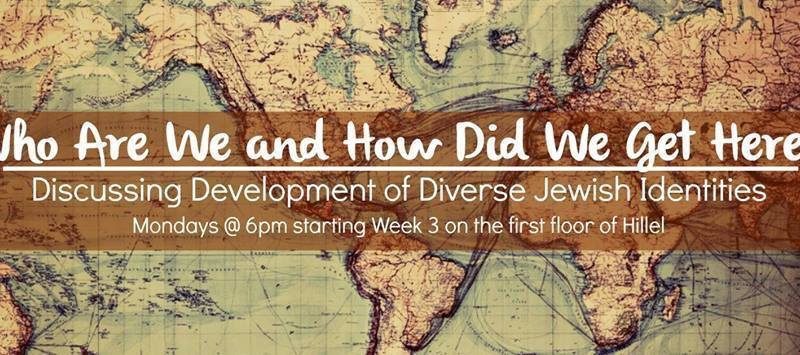The new Hillel Speaker Series, a weekly event featuring a notable scholar or leader in the Jewish community, has created a forum at which students can explore Jewish identity.
This past week, students had the opportunity to learn with Dr. Saba Soomekh, and they develop a deeper understanding of Persian/Iranian Jewish identity. In addition to teaching intriguing courses on Sephardic literature, Mizrahi women’s literature and the study of Iranian Jews in Los Angeles, Dr. Soomekh serves as the Assistant Director for Research at the Alan D. Leve Center for Jewish Studies at UCLA. She received her B.A. in Religious Studies from UC Berkeley, her Masters from Harvard Divinity School and her Ph.D. in Religious Studies from UC Santa Barbara. Aside from teaching and studying religion, gender and history, Dr. Soomekh has also embarked on research projects dealing with subjects as untouched as the LGBTQ+ issues among the Iranian Jewish community. During the Speaker Series discussion, Dr. Soomekh pointed out that students enrolled in her course for next quarter—Sociology 191V: Iranian Jewish Life in Los Angeles: Past and Present—will have the opportunity to address this topic in further detail.
The night began as students made their way into the Hillel building and seated themselves in a circle. Dr. Soomekh prefaced her presentation by pointing out a tendency that many students in the room—Iranian Jewish students, included—had not noticed in the past. When Iranian Jews describe their identity, they often consider themselves Persian rather than Iranian.
Dr. Soomekh then detailed the history of the Iranian empire and the condition of its Jewish population. Students learned that Iran, which became the Islamic Republic of Iran, a theocracy, in 1979, was not always Islamic in nature. In fact, the initial empire was called the Persian Empire and was led by a Zoroastrian monarch, Cyrus the Great. Cyrus the Great is a celebrated figure among Iranian Jewry due to his religious and cultural tolerance and his edict allowing the Jews to return to Jerusalem after being taken into captivity by the Assyrians in 722 B.C.E. and by the Babylonians in 586 B.C.E. Rather than considering himself Iranian, Cyrus considered himself a Persian ruler. Persian identification would persist until the 20th century and would come to encompass a rich body of poetry, prose, music, cuisine and even etiquette — all of which were appreciated by the Jews of the land.

It was not until the year 1501 C.E. that the Persian Empire officially became a Shi’ite Islamic state, under the rule of Shah Ismail I of the Safavid dynasty. By the time Reza Shah Pahlavi came to power in 1925, the country was not only Shi’ite in nature, but the nation was no longer called Persia. Rather, with a vision to better reflect the nation’s Aryan origins, Reza Shah sought to give the country a new name: Iran. During the Pahlavi era, which included the reign of Reza Shah and his son, Mohammad Reza Shah Pahlavi, Iran became a symbol of modernity and secularism in the Middle East. The country’s oil was nationalized, women were granted the right to vote and Jews were given the opportunity to become further integrated into the society. Iranian Jews enrolled in universities, took up positions of leadership in the government, gained prominence in the realm of academia and even won awards for scientific and cultural achievements.
However, the Pahlavi dynasty collapsed in 1979, when the Iranian population revolted against the monarchy and sought to become a republic. The people found a leader in Ayatollah Ruhollah Khomeini, a cleric who Mohammad Reza Shah had seen as a potential threat and had exiled to Paris, France beforehand. With the victory of the revolution in 1979, Khomeini returned to Iran from Paris. Rather than returning to the mosque and serving as a spiritual advisor, as many revolutionaries thought he would, Khomeini assumed the position of Supreme Leader. With his rule came laws that made the wearing of the veil mandatory for women, reformed the educational system to align it more closely with Islamic tenets, and outlawed Zionism and those associated with the movement.
Following the establishment of the Islamic Republic of Iran, numerous Jews were executed on suspicions of connections to Zionists in Israel — one of the victims was Habib Elghanian, co-founder of the well-known Plasco Building in Tehran. Moreover, from 1979 to 1981, Iranian youth held 52 Americans hostage in the United States Embassy in Tehran for 444 days, in what was later known as the Iran Hostage Crisis. These acts painted a picture of an Iran very different than the secular and culturally saturated one Jews has previously known and cherished. Furthermore, they served as evidence that the country was no longer the same safe haven it once was under the rule of Cyrus the Great. The cultural prowess of Iran had been overshadowed by the political conflicts of the time.
Thus, students in the audience then came to understand just why Iranian Jews today consider themselves Persian, rather than Iranian. As Iranian Jewish immigrants and those who came after them ponder their identity, they affiliate themselves with the country and culture that stressed the tolerance of diversity and love of the arts. Although that past may be physically gone, it persists through the years as Iranian Jewry maintains identification with their Persian roots.
As Dr. Soomekh’s presentation came to a close, she was met with a series of questions from both Iranian and non-Iranian students, alike. Her discussion sparked an interest among the Jewish Bruin community, and it is expected that such an intrigue will continue as the quarter progresses and Hillel at UCLA continues the effective and inviting Speaker Series program.

